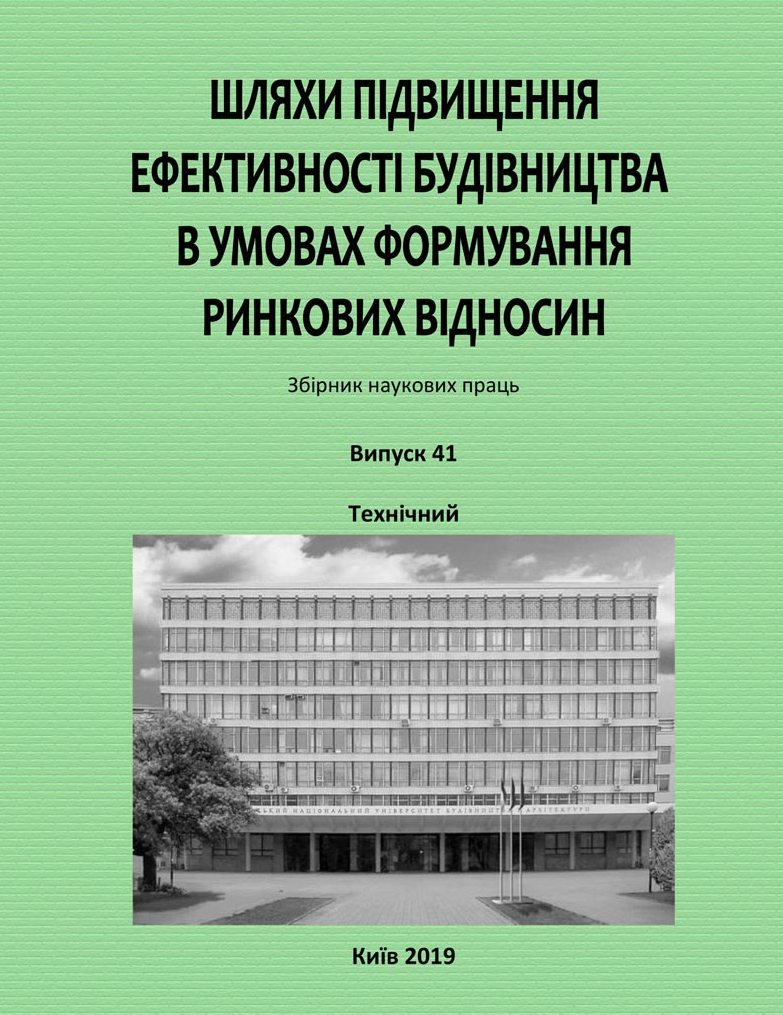Optimization of the duration of construction works in case of implementation by specialized brigades
DOI:
https://doi.org/10.32347/2707-501x.2019.41.39-45Keywords:
duration of work, the analysis of organizational and technological conditions, the characteristics of construction and erection worksAbstract
The probabilistic nature of construction production, which is the action of a large number of random factors on the progress of construction and installation works in the construction of housing projects. The duration of construction and installation works in most cases is carried out using deterministic methods that do not take into account the probabilistic nature of construction production. Methods that, in one way or another, when determining the duration of construction and installation works, take into account the probabilistic nature of construction production, focused on the organization of construction in the context of centralized planning of the administrative-command system for managing construction. These methods cannot ensure that organizational and technological conditions for the implementation of construction and installation works and market relations are taken into account, which makes it impossible to justify the duration of housing construction work with a sufficient level of reliability. Improving the reliability of the justification of the duration of housing construction can be achieved by determining such a duration of work, taking into account the organizational and technological conditions for their implementation, a probabilistic nature builds.
Analysis of organizationallytechnological terms of implementation of building and installation works at the use of the specialized brigades, in accordance with concepts accepted in the theory of mass service, allowed to define that this process can be approximated by the queuing system without a mutual help (the amount of channels of service coincides with the amount of requests) from pyasonivskim by the input stream of requests and exponential or еrlangivskim of the second order by distribution (depending on the type of building and installation works) of service a stream.The optimal duration of construction and installation works is recommended to be determined on the basis of calculating the optimal indicator of the intensity of their implementation using the mathematical apparatus of the queuing theory.
References
Afanasiev, V.A. & Afanasiev, A.V. (1988), Design of the organization of construction by the organizations and production of works [Proyektirovaniye organizatsii stroitel'stva organizatsiyami i proizvodstva rabot], LISI, Leningrad [in Russia]
Skripnik, N.A. (1988), Accuracy in housing construction. Workshop [Potochnost' v zhilishchno stroitel'stve. Praktikum], High School, Kyiv. [in Ukraine]
Boushuev, S.D. & Mikhailov, V.S. (1980), Development of construction management algorithms [Razrabotka algoritmov upravleniya stroitel'stvom], Builder, Kyiv. [in Ukraine]
Spector, M.D. (1989), Orientation of construction production to the end goals (organizational and technological aspect) [Oriyentatsiya stroitel'nogo proizvodstva na konechnyye tseli (organizatsionno tekhnologicheskiy aspekt)], Stroizdat, Moscow, [in Russia]
Shebek, M.O. & Gorguraki, G.V. (1997), “Optimizatsiya parametrov «vremya-stoimost'» stokhasticheskoy setevoy modeli” [Optimization of time-cost parameters of a stochastic network model], Shlyakhy pidvyshchennya efektyvnosti budivnytstva v umovakh formuvannya rynkovykh vidnosyn, Vol. 2, pp. 106-109. [in Ukraine]
Shklyarov, A.F. (1974), Reliability of control systems in construction [Nadozhnost' sistem upravleniya v stroitel'stve], Stroizdat, Leningrad [in Russia]
Downloads
How to Cite
Issue
Section
License
Copyright (c) 2020 I. Shatrova, O. Demidova

This work is licensed under a Creative Commons Attribution 4.0 International License.
Authors who publish with this journal agree to the following terms:
- Authors retain copyright and grant the journal right of first publication with the work simultaneously licensed under a Creative Commons Attribution License that allows others to share the work with an acknowledgement of the work's authorship and initial publication in this journal.
- Authors are able to enter into separate, additional contractual arrangements for the non-exclusive distribution of the journal's published version of the work (e.g., post it to an institutional repository or publish it in a book), with an acknowledgement of its initial publication in this journal.
- Authors are permitted and encouraged to post their work online (e.g., in institutional repositories or on their website) prior to and during the submission process, as it can lead to productive exchanges, as well as earlier and greater citation of published work (See The Effect of Open Access).

